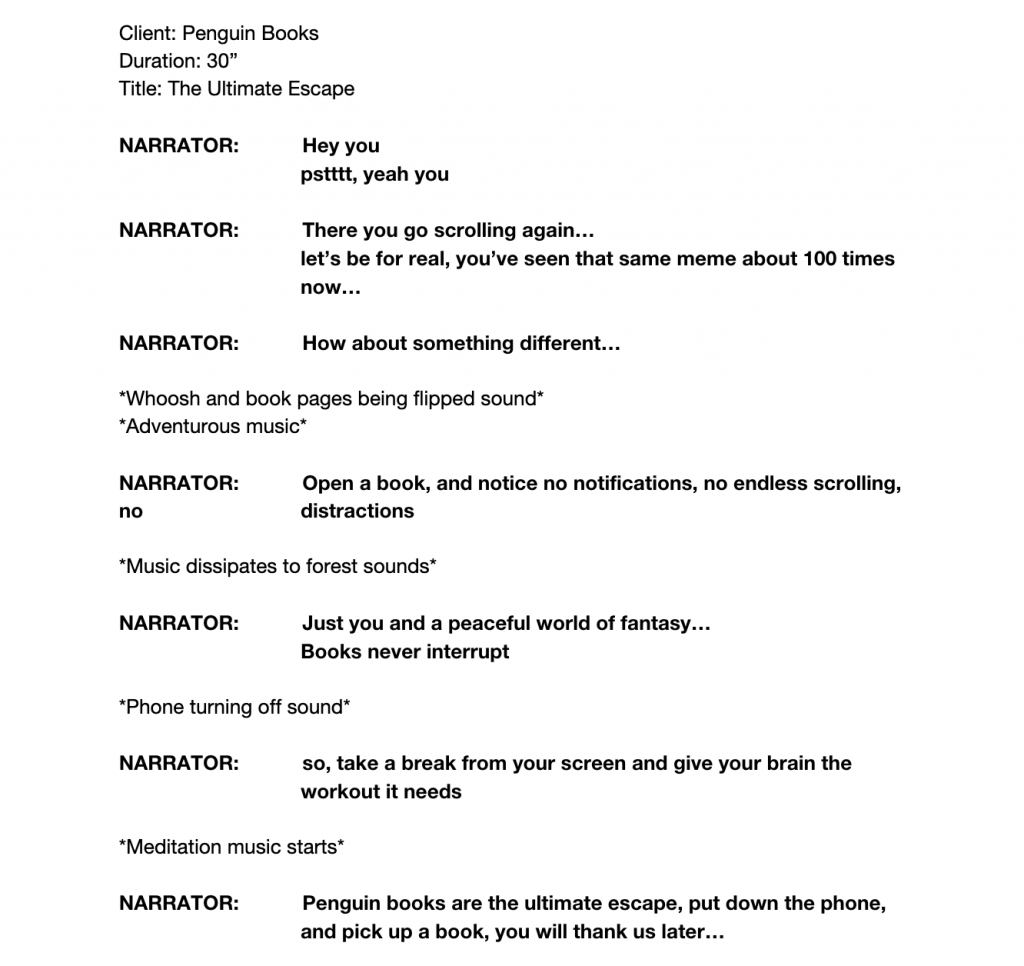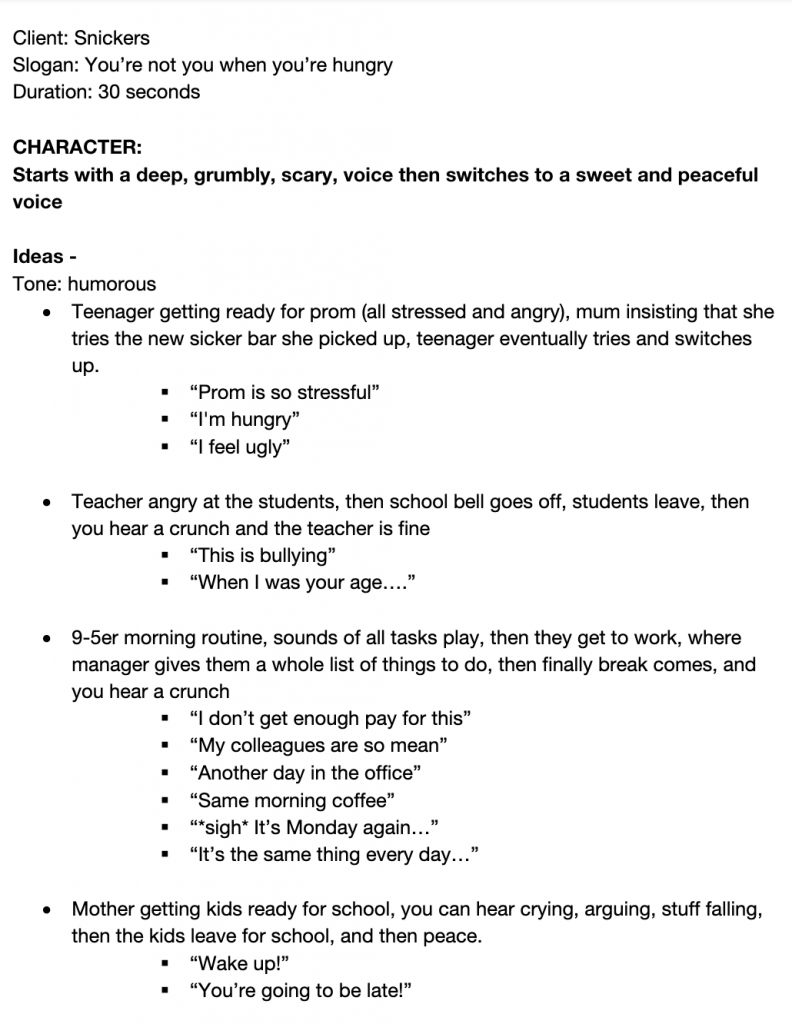Before creating my radio script to persuade listeners to put down their phones and read a book, I worked with my classmate, Sargun, to practice making a radio script for Snickers. I found this activity quite challenging because we had to focus on creating a story without any visuals, relying purely on sound. Since the brand’s slogan is ‘You’re not you when you’re hungry,’ we based our ideas on the concept that we are different when we’re hungry. Once we eat a Snickers, we undergo a 180-degree change into someone else. However, we struggled with this concept, so we decided to focus on an emotional transformation. This meant our character’s emotions would be chaotic, but the moment they ate a Snickers, they would become calm and content. Our tutor then pointed out that our ideas were too broad and that, as listeners, people would struggle to understand the setting and what was actually happening. He also said the personality changes weren’t dramatic enough; it would be more effective if the character switched to a completely different character, rather than just experiencing a small change in their own personality.

These are the two scripts that Sargun and I created for this activity. Since Halloween was just around the corner when we made these, we thought it would be great to work with seasonal themes. The first script was clearly Halloween-themed, inspired by the movie The Exorcist, where the character change involves a demon switching into a sweet young girl. The change would be noticeable through the girl’s voice, and the scary sounds would gradually shift into nature noises and softer music. The second script is Christmas-themed. For this one, we thought of having a man with a horrible singing voice recreate the famous line from Mariah Carey’s song ‘All I Want for Christmas Is You.’ The character switch here is a man with a bad singing voice transforming into Mariah Carey, an amazing singer famous for her flawless vocal ability.

I based my script on the truth that when people are stuck scrolling on their phones, they often scroll past the same or similar posts, trying to find something new to stimulate their brains. I thought it would be an effective way to grab a listener’s attention by addressing them right as the radio advert begins. I also started the script in a way that would confront the listener’s habit of continuous scrolling on their phone. This helps make the advert feel more personal and as if it is really aimed at their behavior, forcing the listener to acknowledge that their scrolling habits are not good.
This is my final recording for my radio script, designed to encourage people to put down their phones and pick up a book—specifically, a Penguin book. From my practice, I learned the importance of sound effects in audio adverts. Unlike visual ads, where the audience can instantly see what’s being advertised, audio ads rely entirely on sound to create a mental image for the listener. It’s crucial to guide the listener through the experience, helping them clearly understand what is being promoted. When I was editing this ad, I realized how dull and flat it sounded with just dialogue. It lacked energy and felt incomplete. To fix this, I started the ad with background chatter, which immediately set a scene and helped the narrator connect with the listener. The sounds of people conversing in the background made it feel as though the narrator was competing for attention in a crowded space, drawing the listener in more effectively.
I also added music to evoke emotion, boosting the listener’s motivation and excitement to learn more. The music helped reinforce the tone of the narrator’s message, enhancing the overall storytelling. Additionally, when discussing the calming effects of reading, I incorporated nature sounds—such as birds chirping and gentle outdoor noises. These soothing sounds are commonly associated with tranquility and relaxation, reinforcing the peaceful atmosphere that reading a book can provide.
